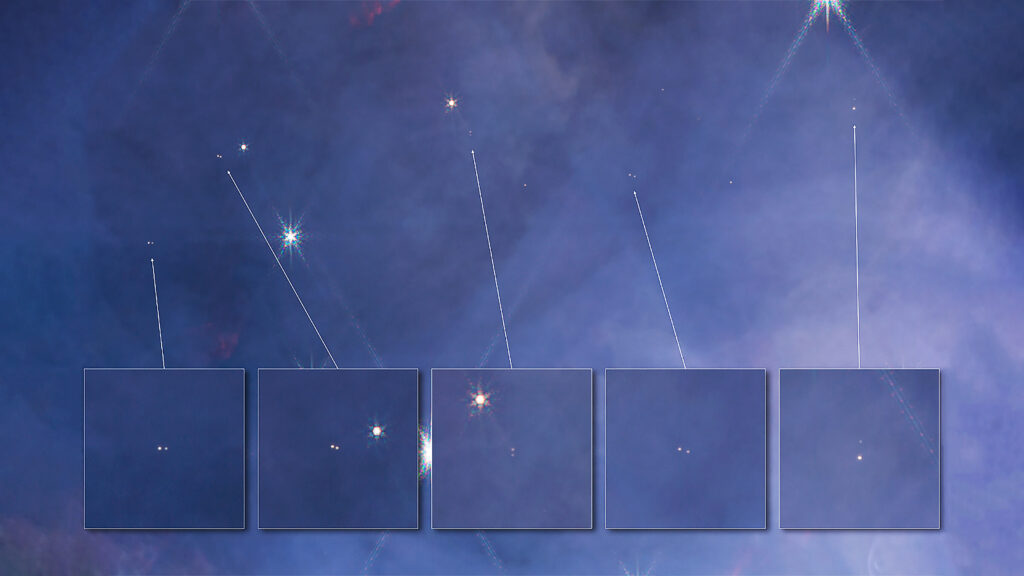Webb Telescope Detects Peculiar Entities within the Orion Nebula
According to the astronomers who discovered them, these celestial bodies are neither planets nor stars, and their existence is deemed impossible.

The recent release of images from the James Webb Space Telescope showcasing the Orion Nebula has unveiled a fascinating discovery. Amongst these images, scientists Samuel Pearson and Mark McCaughrean from the European Space Agency (ESA) have identified approximately 150 enigmatic objects, which they have named Jupiter Mass Binary Objects (JuMBOs).
These peculiar entities defy categorization as either planets or stars, leaving researchers perplexed. Pearson expressed his astonishment, stating that these objects should not exist, challenging our current understanding of planet and star formation.
The Orion Nebula, situated approximately 1,350 light years away from Earth, has long been a subject of extensive study, providing valuable insights into the formation of our own solar system.
“My reactions ranged from: ‘Whaaat?!?’ to ‘Are you sure?” to ‘That’s just so weird!’”
HEIDI HAMMEL
With masses close to that of Jupiter, they’re too small to be stars, but unlike most planets, they aren’t orbiting stars, either — they’re free-floating in space.
It is not uncommon for planets to be expelled from their solar systems, leading to a solitary existence. However, what truly astounds scientists is the fact that numerous objects in the Orion Nebula are not only paired up but also orbiting each other.
Heidi Hammel, a scientist working on the Webb project but not directly involved in the JuMBO discovery, expressed a range of reactions to this phenomenon. From initial disbelief to questioning its validity, she found the situation to be incredibly peculiar. The idea of binaries being ejected together seemed unfathomable to her.
“There’s something wrong with either our understanding of planet formation, star formation — or both.”
SAMUEL PEARSON
Pearson and McCaughrean have recently published their JuMBO research on the pre-print server arXiv, but the scientific community still needs to conduct a thorough peer review of their paper. If their findings withstand this rigorous evaluation, astronomers will have the opportunity to delve into an entirely new realm of objects for further study.
Pearson expressed his desire to utilize the Webb telescope to closely examine some of the JuMBOs located in the Orion Nebula. By analyzing the composition of their atmospheres, scientists hope to gain insights into the formation process of these enigmatic objects. Additionally, exploring JuMBOs in other nebulae could provide valuable information in understanding the occurrence of similar phenomena in less dense regions.
Pearson emphasized the significance of investigating different environments, stating, “Orion is characterized by its immense size and density. By exploring sparser regions, we may uncover valuable clues about the mechanisms behind their formation.”
Do not forget to share your opinion with us to provide you with the best posts !




0 Comments